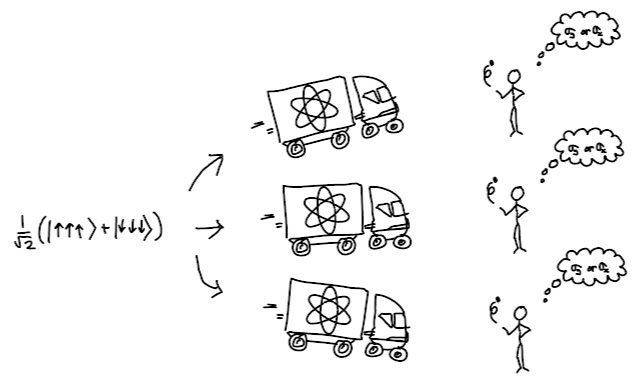The GHZ experiment cartoon

I'm still a bit obsessed with the GHZ experiment. This is the one where you prepare a GHZ state \lvert 000 \rangle + \lvert 111 \rangle and send one qubit to each of 3 protagonists: Alice, Bob, and Charlie. (I will be ignoring shared normalizer constants throughout this post, as I find they don't add anything to the understanding.) If you do the maths it turns out that when all three choose to measure in the \lvert + \rangle, \lvert - \rangle basis (shorthand for \lvert 0 \rangle + \lvert 1\rangle and \lvert 0 \rangle - \lvert 1\rangle) then they are guarranteed to get a parity zero result. On the other hand if only one measures in this basis and the other two measure in the \lvert +i\rangle, \lvert -i\rangle basis (shorthand for \lvert 0 \rangle + i\lvert 1\rangle and \lvert 0 \rangle - i\lvert 1\rangle) they are guarranteed to get a parity one result. As I showed in an earlier post this appears to be incompatible with the outcomes being prede...
